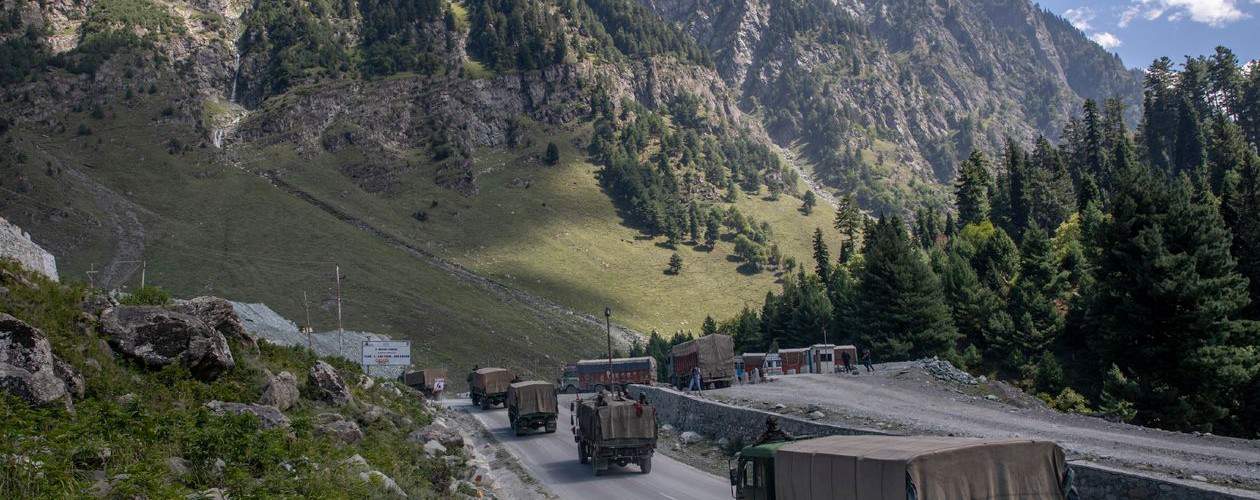Tensions between China and India have flared up in the past year as disputes over many parts of their long, shared border have turned violent as both exchanged accusations the other’s troops crossed into their territory.
While the two countries had never agreed on their border, they had largely given each other space in and around their respective claims for decades until a showdown in June erupted into a deadly clash that left 20 Indian soldiers and an undetermined number of Chinese soldiers dead.
India and China have been negotiating since then over ways to calm the situation, each saying they want to find a way to get along, but at the same time both countries have been building up their military presence in the region.
What happened in June?
What precisely happened remains unclear. The Indian government said that 20 of its troops died in a clash in an area known as the Galwan Valley and that casualties resulted on both sides. The Chinese government didn’t comment on casualties for either side, confirming only that a clash took place after Indian soldiers crossed into an area it considers under Chinese control.
Why are India and China fighting?
The two countries fought a war in 1962, a little more than a decade after their births—India in 1947 and the People’s Republic of China in 1949—over the delineation of their borders. China dominated the short but intense war, focused on the eastern stretch of boundary between the countries. But the war didn’t settle the matter, and much of the 2,000-mile border remains in dispute.
Where exactly did the June clash take place?
The confrontation broke out in the Galwan Valley, a strategic part of the disputed border zone that the two countries refer to as the Line of Actual Control.
In the eastern part, India controls the area as its Arunachal Pradesh state, which lies south of a demarcation line the British colonial government crafted with Tibet before the People’s Republic of China came into existence. China doesn’t recognize that demarcation, known as the McMahon Line, because it doesn’t recognize the legitimacy of the Tibetan government that signed the agreement. It considers the area part of China.
Along the western part of the border, the two sides patrol parts of the Line of Actual Control, where they have been confronting each other with greater frequency in recent years.
When is the last time someone was killed before that?
While skirmishes, fistfights and rock throwing have resulted from patrols from the two sides meeting in disputed areas, lethal clashes have been rare. Four Indian soldiers were killed in 1975 in one of the worst of these.
What prompted the escalation?
India has built infrastructure, such as roads and arms installations, in recent years on its side of the disputed areas, attempting to catch up with earlier Chinese efforts to do the same. The two sides went through a tense standoff in 2017 in an area disputed between Bhutan, an Indian ally, and China near a strategic point on the Indian-Chinese border.
What exactly triggered the tensions remains somewhat unclear. Chinese troops have moved more frequently into areas of dispute in some parts of the border, with Indian troops seeking to counter their moves resulting in at least one physical brawl. The two militaries have held weeks of talks, and diplomatic efforts have also continued, to try to de-escalate the situation.
What is the danger of this turning into a broader conflict?
The accusations could ratchet up diplomatic and military tensions between the two nuclear-armed neighbors.
What are India’s and China’s stances?
Each side is blaming the other for having troops in areas they were supposed to avoid. They both have said they have a right to defend their territory and people, but stressed that they are continuing a dialogue to try to lower tensions and avoid any escalation or repeat incidents.
Anti-China protests spread in India after the June incident as people vented their anger. Mourners gathered across various towns and cities in India to pay respects to the soldiers whose bodies were brought back home for last rites. Protesters called for a boycott of Chinese goods in some parts of the country, even as police tried to limit large gatherings to slow the surge in coronavirus cases.
Beyond a few official statements, reaction in China has been relatively muted, partly because local media hasn’t prominently featured the Himalayan confrontation in its coverage. Some Chinese posted nationalistic responses on the microblogging platform Weibo, praising the country’s troops and making anti-India comments.
Has there been further violence since June?
As both sides seem to be jockeying for position and trying to solidify and protect their respective claims, there continues to be tensions, some pushing between troops and even reports of shots fired but no deaths announced from the conflict since the deadly encounter in June.
In one example in August, India said its troops acted to stop Chinese troops from crossing into territory India considers to be on its side of the disputed border and taking control of a strategic area along a lake in the Himalaya mountains. Indian troops from a special covert team scrambled ahead of a group of Chinese soldiers to control several crucial Himalayan heights on the southern bank of the lake, placing Indian forces in a strategically advantageous position to observe Chinese activities along the north bank of Pangong Lake, according to Indian officials.
China countered that it was Indian troops that crossed illegally beyond what it considers its side of the Line of Actual Control.
In January, Indian and Chinese security forces had a scuffle along their disputed border in the Himalayas. The Indian army played down the skirmish, which happened on Jan. 20 near the high-altitude Nakula Pass in the northeastern Indian state of Sikkim, calling it a minor face-off.
Photo: Much of the 2,000-mile border remains in dispute. – DAR YASIN/ASSOCIATED PRESS


Would not be good to see these two go at it..